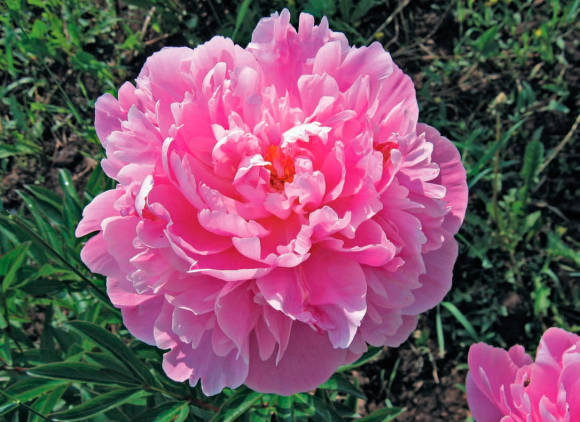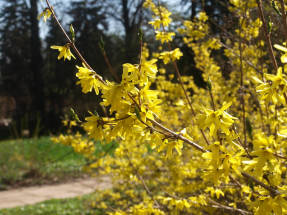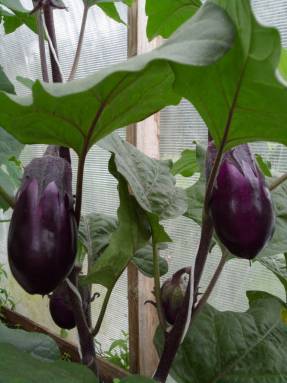Among the numerous species of the genus sorrel, there are a lot of useful ones, but most of them are weeds. The main crop is sour sorrel (among the people - garden sorrel, common sorrel, oxalis, sour, alum), widely grown in Russia. But he is not the only edible sorrel. In Europe, a subalpine species grown on stones is in high esteem. In the United States, nodule sorrel is widespread - a rival of rhubarb. In the highlands of the Caucasus, sorrel grows, from which not leaves are collected, but roots.

As a wild vegetable, sorrel has been known to people since ancient times. Its ubiquity, extreme availability and ease of use make this herb a popular early spring vegetable. It was introduced into the garden culture long ago.
Varieties
Among the most common varieties of sorrel today are:
- Belleville - mid-early variety. The rosette is raised, spreading, the leaves are large, oblong-ovoid, fleshy, light green in color. The leaf blade is smooth or slightly bubbly, up to 15 cm long. The petioles are thick, of medium length. The leaves have a pleasant slightly acidic taste. The variety is frost-resistant, stem-resistant.
- Large-leaved - early maturing, high-yield variety with a standing rosette of leaves and light green leaves. The variety is resistant to shooting and low temperatures.
- Malachite - mid-early variety, 45-50 days pass from germination to the first cut. Leaves are spear-shaped, smooth, with wavy edges, with long petioles. The taste of the leaves is slightly acidic.
- Odessa 17 - early maturing, drought-resistant variety. The socket is raised, spreading. The leaves are elongated, oval, the length of the blade is up to 15 cm, width is 6–7 cm. The variety is resistant to stemming.
- Broadleaf - the leaf blade is ovoid, medium to large, green in color. The leaves are very tender, moderately acidic, of excellent taste. The variety is fruitful, winter-hardy, resistant to shooting.
- Spinach - medium early variety with large leaves. The rosette of leaves is erect, loose. The leaves are dark green, slightly bubbly, high in vitamin C, slightly acidic.
Agricultural techniques

Sorrel is usually cultivated as a two or three year old crop. Any plots with various, but not swampy soils are suitable for it. Areas sufficiently provided with moisture and with an equal relief are considered good. For early greenery, the light southern and southeastern slopes, which are quickly cleared of snow, are best.
The area for growing this crop must be free of weeds, especially wheatgrass. In a shaded area, sorrel is less vitamin-rich and less luxurious. Usually, in a garden plot, one bed is allocated for this plant, taking it out of the crop rotation.
It grows on all kinds of soils, including acidic ones, but it grows especially well on moist fertile loamy, slightly acidic soils. It consumes a large amount of nutrients, so it needs a fertile, deeply cultivated area. Nitrogen is of particular importance for leaf growth. On poor soils, the leaves are small, skinny and tasteless.
The best precursors for sorrel are early cabbage and potatoes, carrots, beets, cucumbers, parsley, lettuce, spinach, dill, radishes.
Preparation of the soil for this crop begins in the fall. The soil is dug onto the bayonet of a shovel, preliminarily adding 1 bucket of manure or compost to 1 square meter, 1 tbsp. spoon of superphosphate and potassium fertilizers. In the spring, the soil is harrowed so that it does not dry out. Then it is dug to a shallower depth, preliminarily adding a quarter of a bucket of humus and 1 teaspoon of ammonium nitrate to 1 square meter. Before sowing, the soil must be free of weeds.
Sorrel can be sown in early spring, summer or before winter.Early spring sowing is done as soon as the soil is ripe for processing; the harvest is obtained in the same year. Summer sowing is carried out in June-July after harvesting early crops - radish, Chinese cabbage, lettuce, spinach. The site is dug up and sown with sorrel. For the rest of the summer, it manages to root well before winter and gives a high yield in May next year, when there is a shortage of fresh greens. Podzimny sowing is carried out in late autumn in frozen ground in furrows prepared in advance, which are then covered with dry humus so that the seeds do not germinate before the onset of stable frosts. In this case, the harvest can be obtained next year.
The most favorable conditions for seed germination when sown in early spring, because at this time, there is enough moisture in the upper layer of the soil; at the same time, the seeds germinate together. When sowing in summer, the plants need to be watered regularly.
For sowing, it is better to use young one-two-year-old seeds. Soaking the seeds accelerates their germination, and seedlings appear on the 8-10th day. When sowing dry seeds, seedlings appear in two weeks.
Usually sorrel seeds are sown in rows with a distance of 25-30 cm between them, seeding the seeds to a depth of 2-3 cm. When sowing in the summer, when the soil is drier, the seeds are planted to a depth of 3-4 cm. Then the crops are mulched with peat or humus. The emerging seedlings are thinned out to a distance of 4 cm, and with the appearance of 3-4 leaves - by 7-8 cm.
Care consists of regular loosening and weeding, watering and feeding, removing flower arrows and regularly cutting the leaves.
In the second and subsequent years, in early spring, sorrel is cleaned of last year's leaves, old stems are mowed and fertilized with full mineral fertilizer per 1 square meter, 1 teaspoon of ammonium nitrate, superphosphate and potassium fertilizer or mullein solution diluted with water 6–8 times.
To obtain an earlier harvest of green products, the beds are sprinkled with ash or peat crumbs 10–12 days before the snow melts and covered with plastic wrap. The same effect is obtained by covering the sorrel beds with a film for the winter.
During the summer, the plants are regularly watered moderately; in dry weather, the watering rate is increased. During the season, 3-4 loosening of the soil is carried out in the aisles to a depth of 4-5 cm.
The economic value of sorrel occurs when the leaves are 10 cm long, i.e. by about the end of May. By this time, the plants have 4–5 leaves of normal size for the variety. Before cutting the leaves, the garden bed is weeded.
It is better to cut sorrel in the morning. Leaves are cut carefully, at a height of 3-4 cm from the soil surface, taking care not to damage the apical buds of the plants. In order not to reduce the quality of the products, the appeared peduncles must be removed as early as possible. During the summer, 3-4 leaf cuttings are carried out, ie. after about 20 days.
During the mass formation of flower arrows, the cutting of leaves is stopped, and the arrows are cut so as not to weaken the plants. At the first harvest, 0.7–0.8 kg of leaves are removed from 1 square meter, and in subsequent years - up to 2 kg.
For very early production, sorrel distillation can be used. To do this, biennial plants are dug out of open ground, the leaves are carefully cut off, trying not to damage the buds, the roots are dropped into the sand in the basement and stored until distillation at a temperature of 0–1 ° C. In March, the plants are planted in a greenhouse, and after 30 days, the leaves are cut off. If desired, sorrel can also be grown indoors throughout the year.
Sorrel greens are stored in plastic bags in the refrigerator at a temperature of 0–1 ° C, where they are well stored for up to 2 weeks. Without refrigeration, it can be stored for no more than 2-3 days.
To obtain seeds, it is necessary to leave several plants at a distance of 15–20 cm from each other. The browned inflorescences are cut off, tied into sheaves and dried for 10 days in a ventilated room. Then the sheaves are threshed, the seeds are placed in storage.









